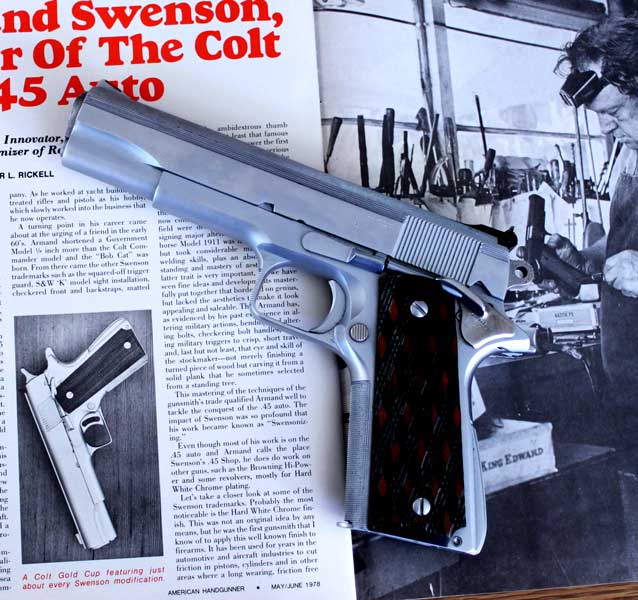
Just welcomed a new arrival to the family:

As I go through the pistol, I'm finding little touches. I'll get some closups and commentary.
Here's a closeup of the front sight. Note the handwork, and the hard plastic insert:
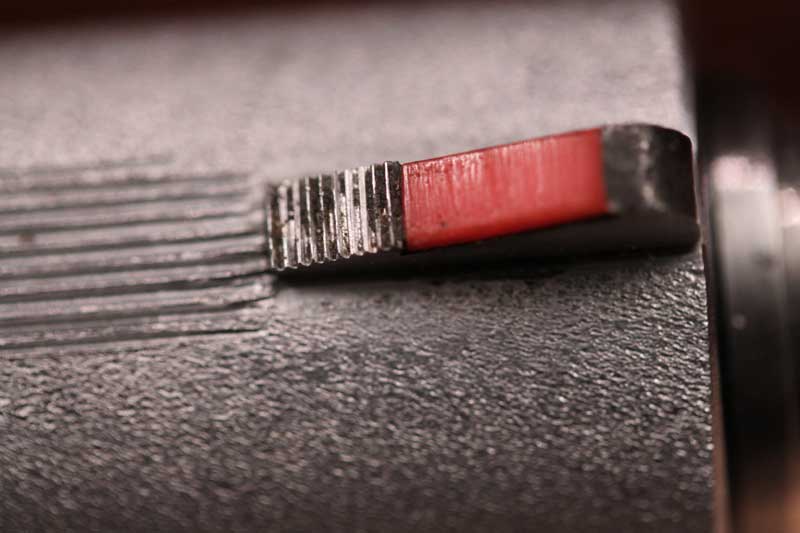
The S&W K-frame rear sight's attachment to the slide is reinforced by this pin:
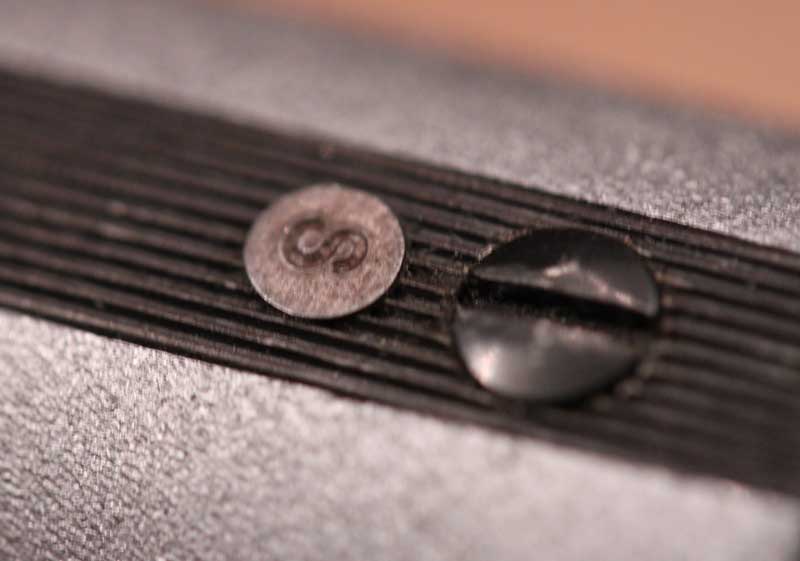
Third in this series of detail pics is the barrel hood. Not only is there a notch in the middle of the rear surface, presumably to act as a loaded chamber indicator, there are what appear to be notches on either side of the hood. I believe that the notch appearence is an artifact of the welding done on each side of the hood to permit filing back for a perfect fit to the ejection port:

Quote:
Third in this series of detail pics is the barrel hood... there are what
appear to be notches on either side of the hood. I believe that the notch
appearence is an artifact of the welding done on each side of the hood to
permit filing back for a perfect fit to the ejection port.
You are correct, in a great many of the gun that Swenson built the barrel was welded-up and re-fit. Your gun also appears to have the barrel positioner, was the barrel sleeved at the bushing end and/or was a new barrel bushing fit?
Very cool that it has a hand-matte slide top.
Is the gun a Gardena or Fallbrook marked gun or no city at all?
Quote:
Your gun also appears to have the barrel positioner.
Ah yes, is this it?
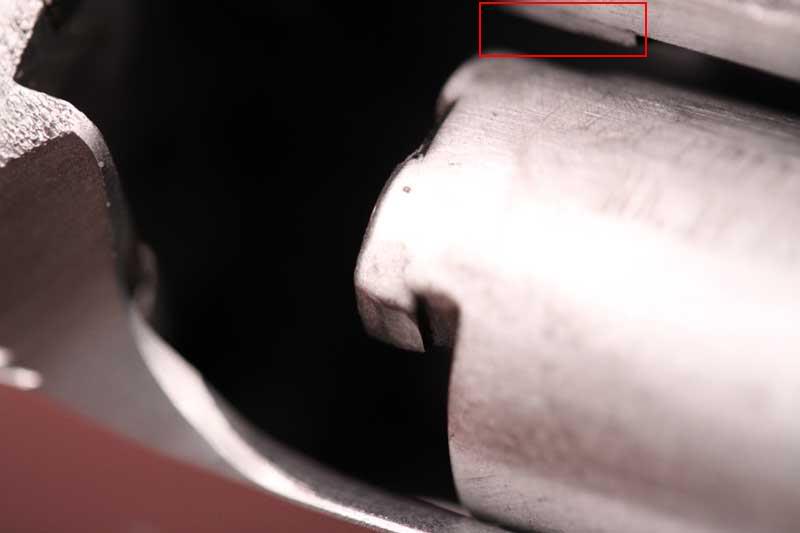
As I understand it, this (plus a lot of welding-up) was Swenson's way of improving the fitting of the hood, at a time when oversize aftermarket barrels didn't exist.
Kinda makes you wonder what he would make of today's market!
Here's a pic of the barrel positioner:
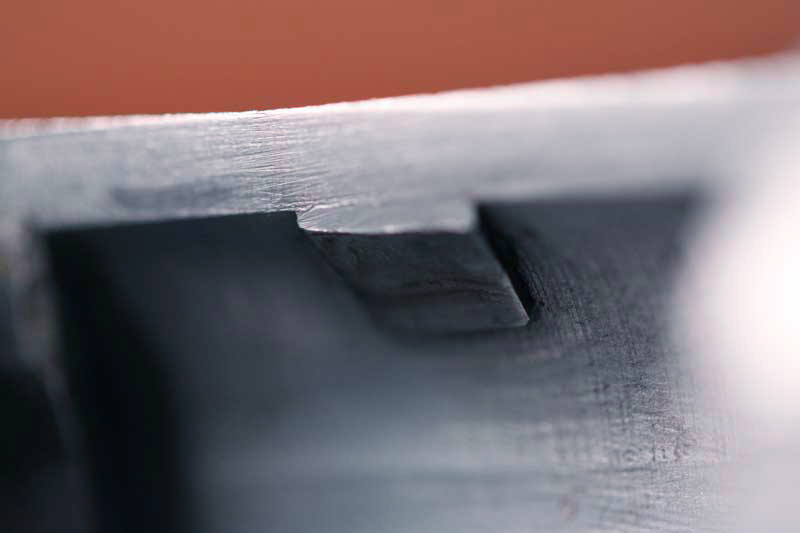
Unlike some other pictures I've seen, presumably of later pistols, there is no evidence of the positioner on the exterior of the slide.
For those interested in the "City" marking, or lack thereof, two pics:
The slide:
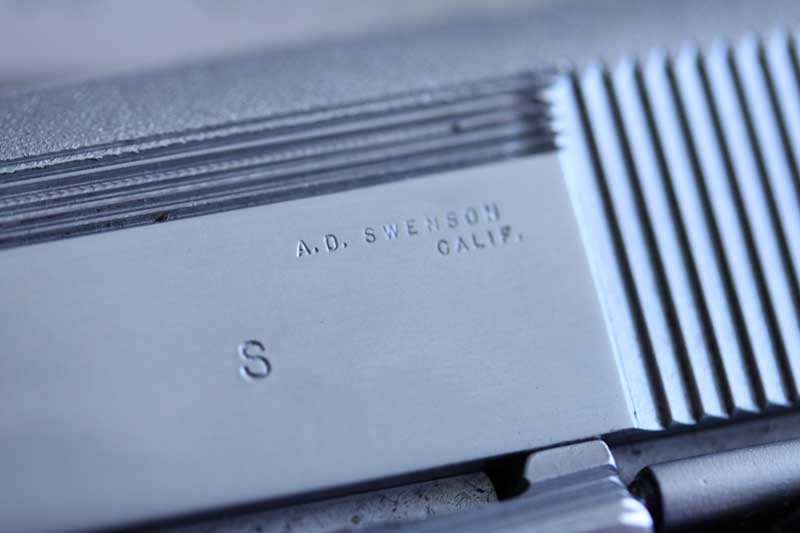
- and the safety. The right side safety lever is marked the same:
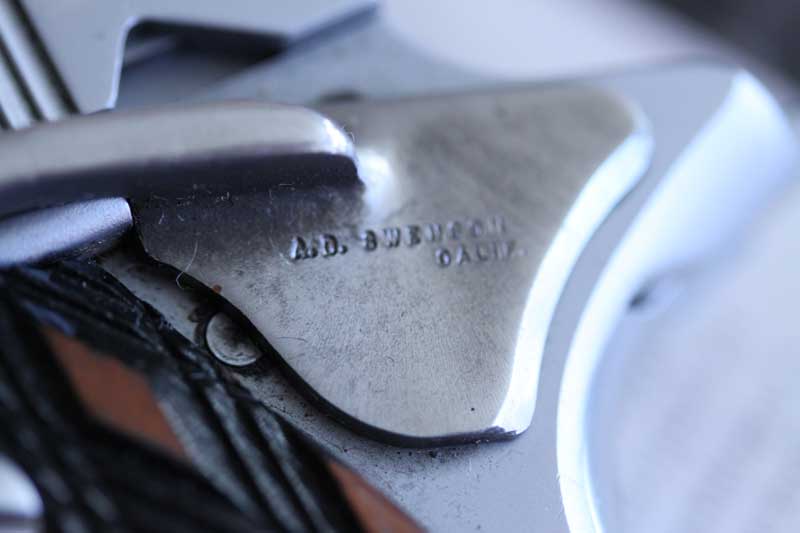
Note that the "S" in the pictures is not "S" for "Swenson," but "S" for "WES," the original owner of the pistol:

In this third picture, you can see the notch in the barrel hood, if you look to the far left.
Someone asked about the barrel bushing. Here's a pic. The barrel is marked "Colt Series 70," so presumably it's a Colt Series 70 bushing:

Quote:
Maybe it's simply nicely done and well hard-chromed...
Just awesome. These are the guns I'm looking at, when I'm trying to spec the 1911 of my dreams..!
Rekladan, Swenson must have done his work almost completely by hand. In some respects the work is quite crude by today's standards; I have a Garthwite in hand with which to compare the Swenson. There is a discernable difference.
When we keep in mind the context of this work, the early '70's, Swenson wasn't building pistols to look pretty; he was building them to win combat competitions. Thus, how the border to the slide top stippling ended was really not important.
I'll have to do some closeups of the checkering. Swenson pioneered 30-lpi checkering of front straps and the like. The feel is quite remarkable: sticky without being punishing.
I must say I'm really liking this pistol. Of course, for me it represents the pinnacle of an era during which my opinions were largely formed. Hence, the pistol I built circa '72: Cooper-compliant and "Swenson" on the cheap ;.
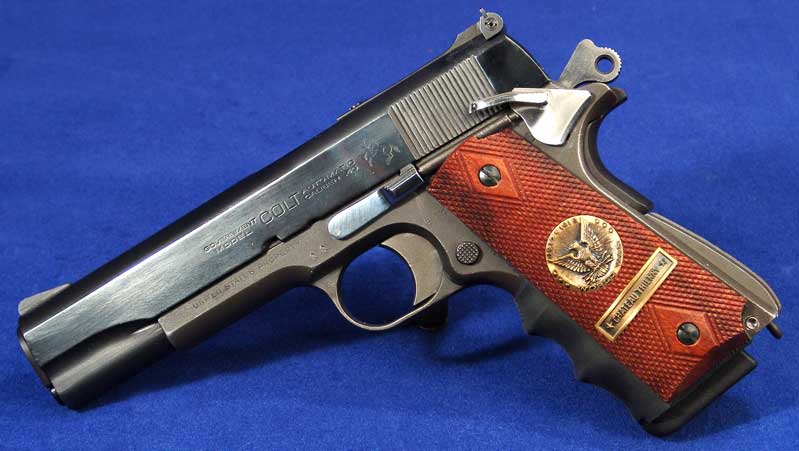
Oh, heck, two more before I knock it off for now:
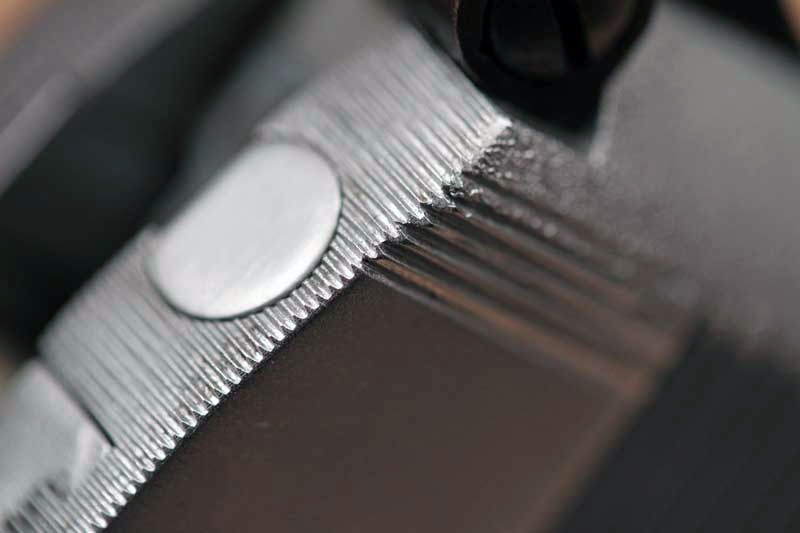
My understanding is that Swenson did not groove the extractor.
Here's a full-on shot:
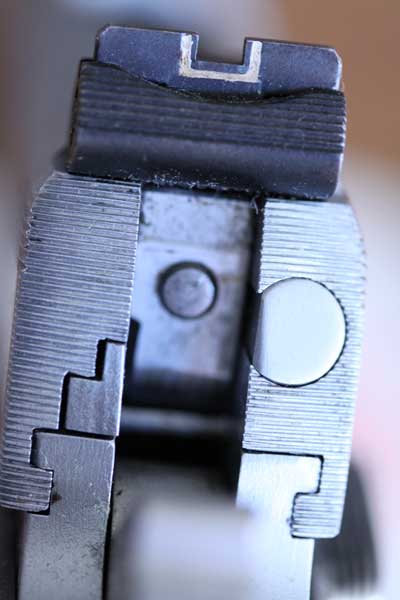
Quote:
When we keep in mind the context of this work, the early '70's, Swenson
wasn't builing pistols to look pretty; he was building them to win combat
competitions.
I've heard of this before, and looking at guns like this, it seems reasonable. I guess many people mistake features like the hard-chroming for embelishments, forgetting that, at the time, it was regarded as the toughest- possible finish on a hard-use pistol (a statement that would only be a mild exaggeration today).
...all the more reasons to take this beauty to the range!
Interesting to see that Swenson used or retained the collet barrel bushing.
Quote:
Unlike some other pictures I've seen, presumably of later pistols, there is
no evidence of the positioner on the exterior of the slide.
That is one of the benefits of the hand-matte slide top, the matting helps to cover the exterior “plug” of the barrel positioner.
Swenson was one of the first to apply 30lpi checkering to the front strap. The checkering feels sticky, without being overly agressive to the fingers:
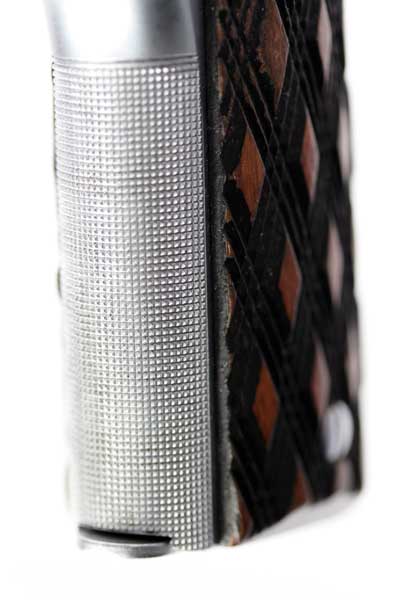
The trigger guard is squared, of course, another Swenson trademark. While we no longer use the front of the trigger guard for the weak hand index finger, the checkering is still pretty cool:
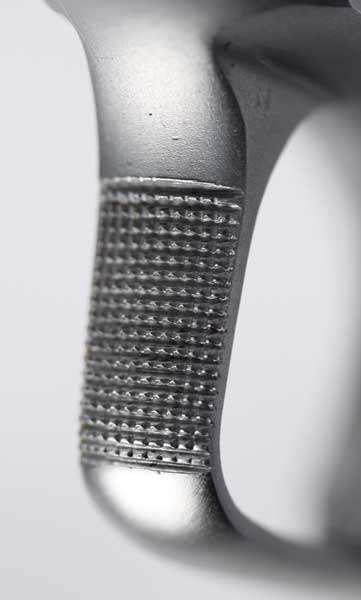
At least the squared-off trigger guard gives more room for a glove, if needed.
Here are the last two of this photo study. First off, the beveled mag well. By today's standards, nearly invisible:
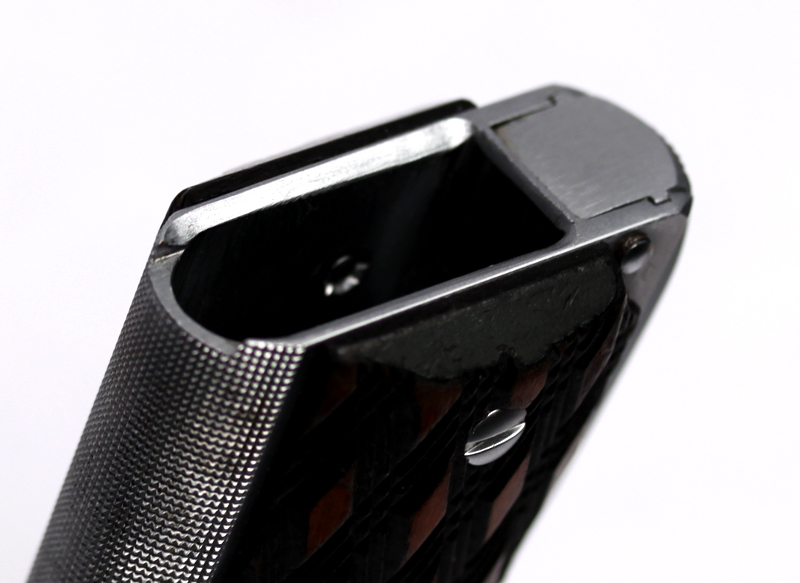
Finally, an overall glamour shot to end the series:
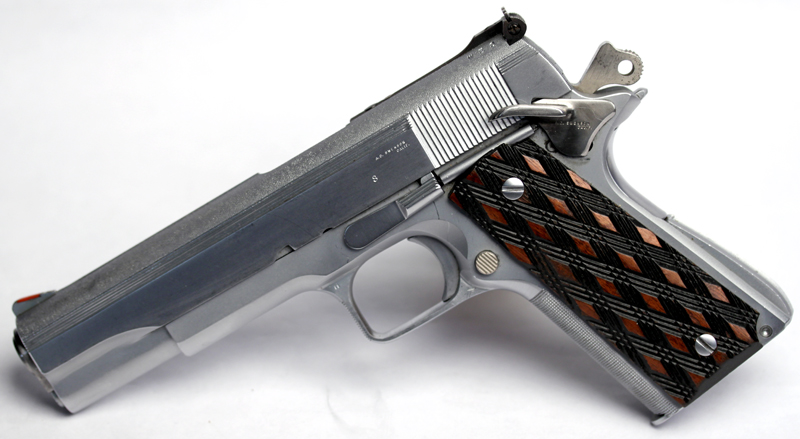
Here's the right side:
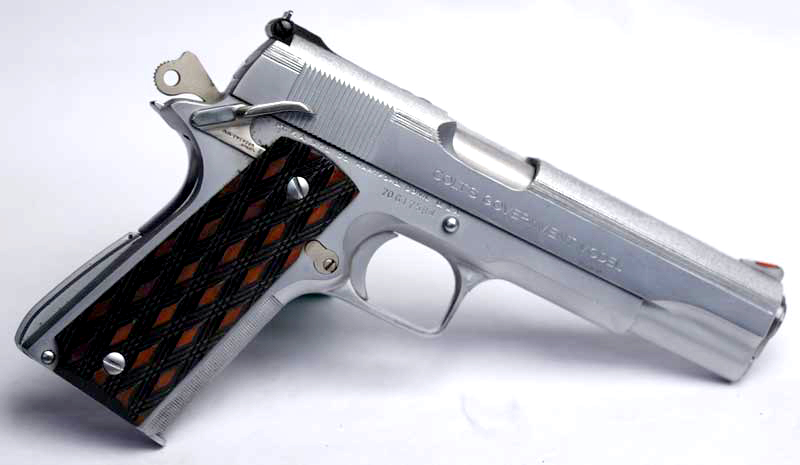
Quote:
I forget, who is credited for the flared ejection port, Swenson or maybe
Devel?
Just got off the phone with Wayne Novak, who worked with Swenson for a couple of years, and the answer is...
Colt.
Yep, Colt.
Related question: who first began lowering ejection ports?
Answer:
Colt. Per Wayne, the Commander's ejection port was lowered just as far as you can go.
Many thanks to Wayne for taking the time to answer a, well, simple question.
Quote:
Thanks Walt, I could have sworn that it was a gunsmith's modification.
Well, it certainly did become one, and for the same reason as the original: to allow the brass a better chance of exiting the ejection port without getting dinged up. The Bullseye shooters, then the practical shooters, needed to reload their ammo—or go bankrupt shooting factory ammo (except for the very few with a sponsor!).
[slide]
Along with the previous pictures (posts #6 & #17), here's another:
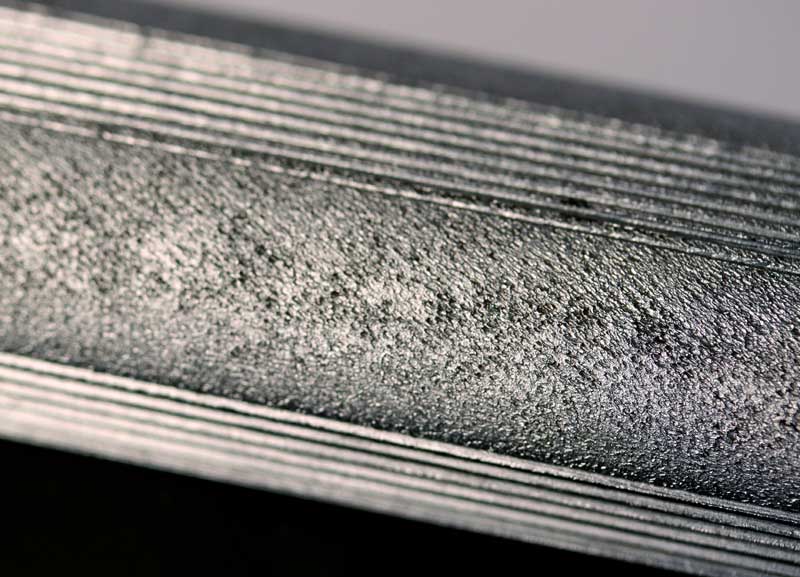
Hope this helps. Looks as though the tool was a very sharp round punch. Punched a whole lot of times!
IIRC, Swenson laid a large file on top of the rounds and whacked with a hammer.
Quote:
That is how he achieved his "matting" on the top of the slide
Wilson,
So it's not stippling as I was thinking of it but, as described, a "matting"?
He must have used a coarse file to achieve the reults? Probably should be be
seen in person for a better understanding of the reults?